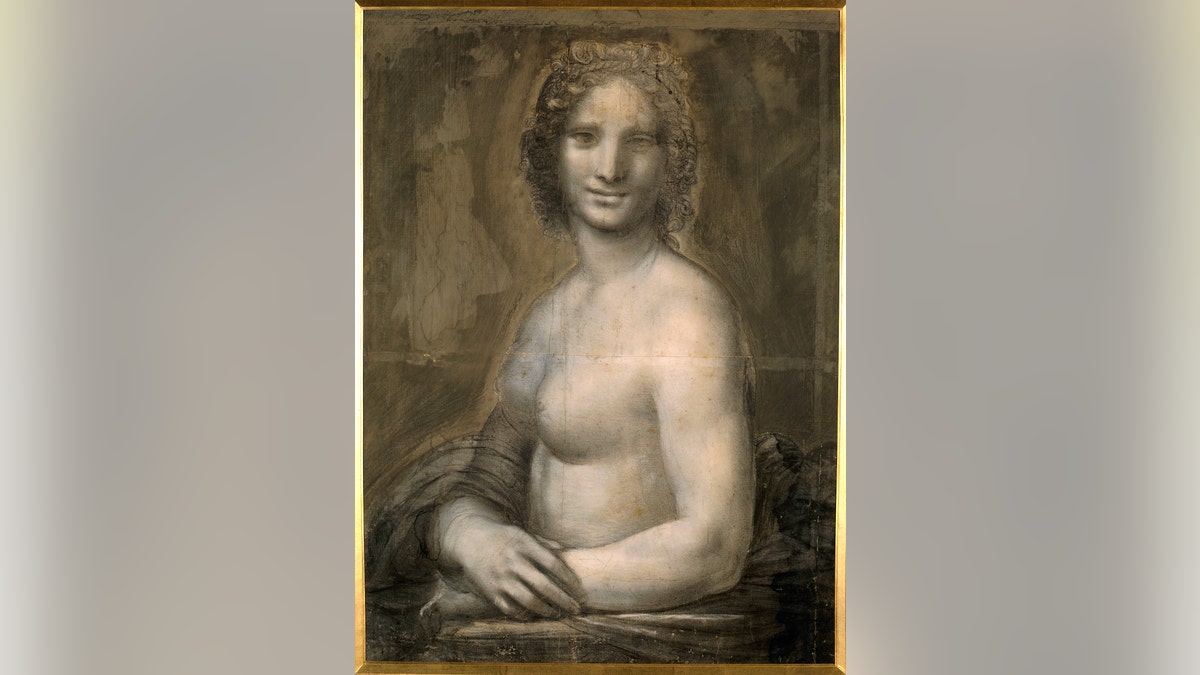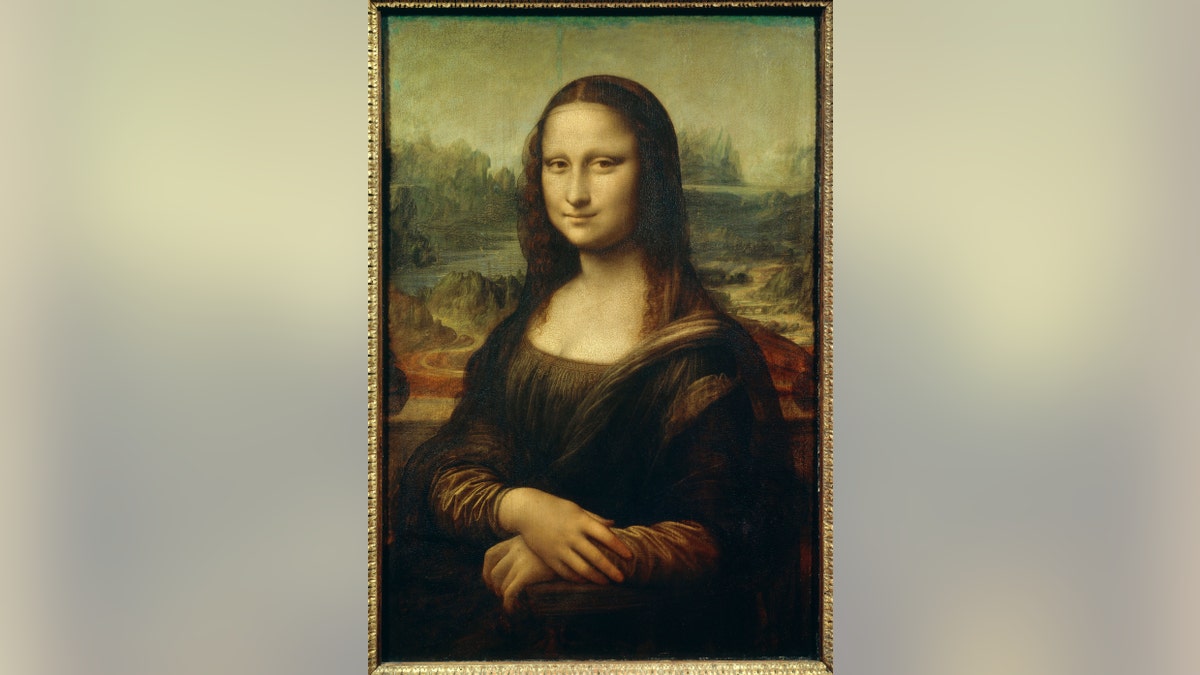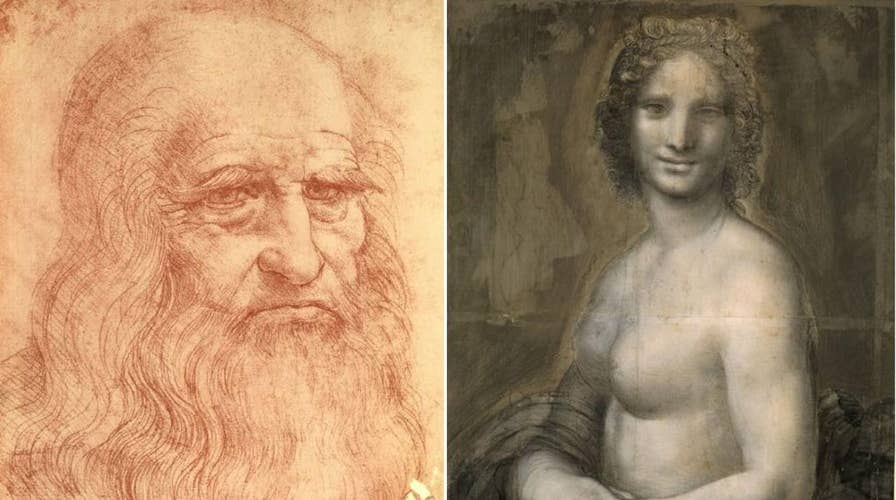Mysterious ‘Nude Mona Lisa’ possibly drawn by da Vinci
A mysterious painting titled the ‘Nude Mona Lisa’ may have been drawn by Leonardo da Vinci.
A new analysis of a charcoal drawing that has puzzled experts for centuries suggests that it was likely created by Leonardo da Vinci.
The “Mona Vanna,” better known as the "Nude Mona Lisa," was long thought to be from da Vinci’s studio, AFP reports. However, analysis of the drawing at the C2RMF laboratory beneath the famous Louvre Museum in Paris indicates that the famous artist himself may have created the work.
The figure’s hands and body bear similarities to the "Mona Lisa," and may have been used in da Vinci’s preparations for the masterpiece. Citing microscopic exams of the work, AFP reports that the “Mona Vanna” was drawn from top left to bottom right, which indicates that it is the work of a left-handed artist such as da Vinci.
LEONARDO DA VINCI'S EARLIEST WORK DISCOVERED?
Purchased by the Duc d’Aumale in 1862, the drawing is in the collection of the Condé Museum at the Chateau de Chantilly, north of Paris.

File photo of the "Mona Vanna" at the Musee Conde. (Photo by: Christophel Fine Art/UIG via Getty Images)
“The Italian master spent a lot of time perfecting his work,” explained the Domaine de Chantilly, in a statement emailed to Fox News. Laboratory analysis shows that the Chantilly drawing "was used as a tracing (to transfer the composition) for paintings probably created in his workshop,” it added.
The “Mona Vanna,” sketch is almost as large as the “Mona Lisa” itself. The famous painting is housed in the Louvre.
BRITISH LIBRARY SET TO REVEAL REAL-LIFE 'DA VINCI CODE'
2019 marks the 500th anniversary of da Vinci’s death and the “Nude Mona Lisa” will feature prominently in a Condé Museum exhibition this summer. “In the manner of a police investigation, and in an immersive way, the visitor will discover the results of the scientific analyses,” explained the Domaine de Chantilly, in its statement.

File photo - The Mona Lisa , by Leonardo da Vinci, at the Louvre Museum in Paris. (Photo by: Christophel Fine Art/UIG via Getty Images)
Da Vinci continues to be a source of fascination. Later this year, The British Library in London is set to showcase a number of Leonardo da Vinci's most important notebooks, all written in his famous “mirror-writing.”
The "Leonardo da Vinci: A Mind in Motion" exhibit will include notes and drawings from three of his most revered scientific and artistic notebooks, the "Codex Arundel," the "Codex Forster" and the "Codex Leicester."
LEONARDO DA VINCI'S $450 MILLION 'SALVATOR MUNDI' PAINTING HEADS TO THE LOUVRE ABU DHABI
In addition to using his own shorthand, da Vinci also wrote his personal notes starting on the right-hand side of the page. It is not clear whether this so-called mirror writing was a way to keep his notes private or simply a means to prevent smudging, as da Vinci was left-handed.

File photo - A tourist takes souvenir photos of Italian painter Leonardo da Vinci's famed portrait Mona Lisa at the Louvre Museum in Paris August 12, 2009. (REUTERS/Jacky Naegelen)
Last year, experts in Italy said they had found the earliest surviving work by da Vinci. The small glazed terracotta tile, described as a self-portrait of the artist as the Archangel Gabriel, was unveiled at a press conference in Rome.
However, the tile’s authenticity was questioned by noted Leonardo expert Martin Kemp, professor emeritus of the history of art at the University of Oxford.
HISTORIANS SAY THEY'VE FOUND LEONARDO DA VINCI'S LIVING RELATIVES
There has even been some debate about the authenticity of Da Vinci’s “Salvator Mundi” painting, which sold for a record $450.3 million in 2017.
CLICK HERE TO GET THE FOX NEWS APP
The painting grabbed headlines around the world when it was sold at Christie’s auction house in New York. "Salvator Mundi," Latin for "Savior of the World,” is one of fewer than 20 paintings by da Vinci known to exist and the only one in private hands.
The Associated Press contributed to this article. Follow James Rogers on Twitter @jamesjrogers

